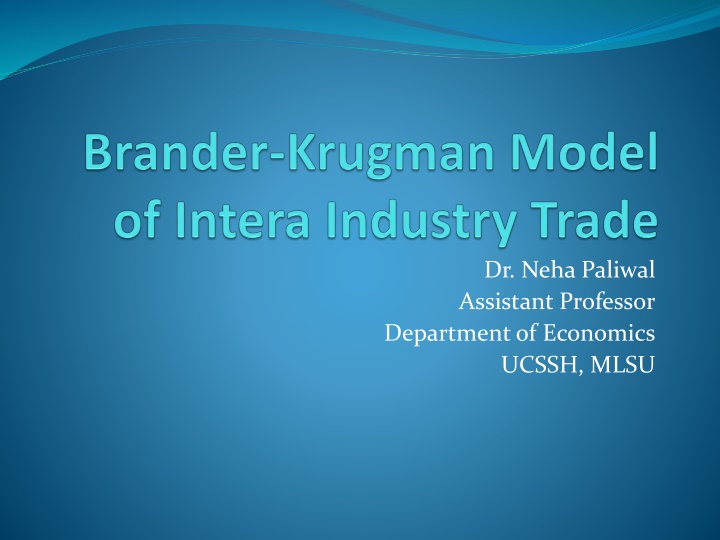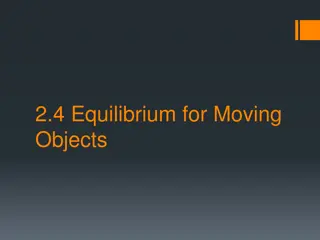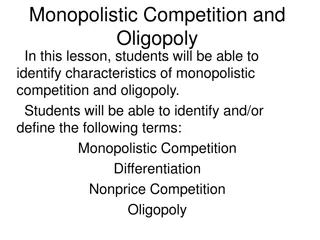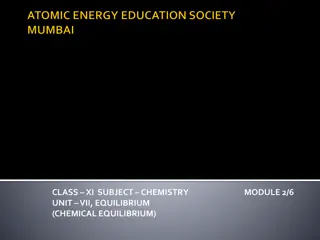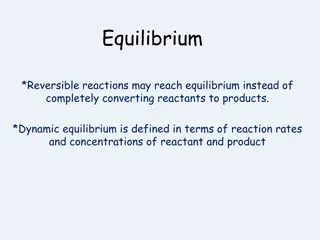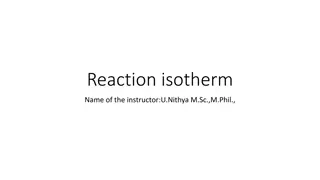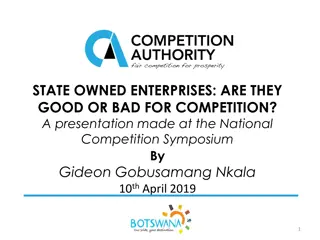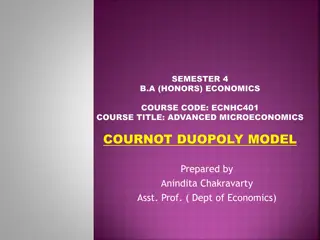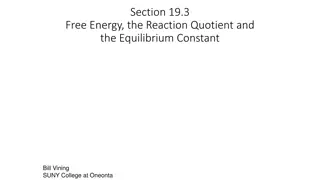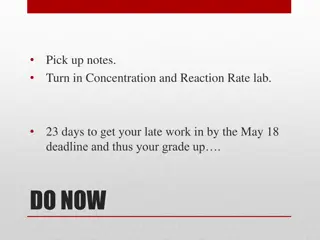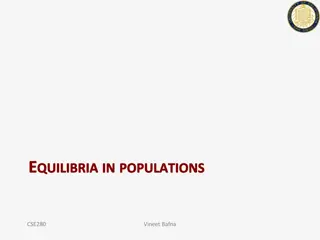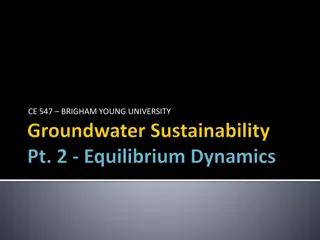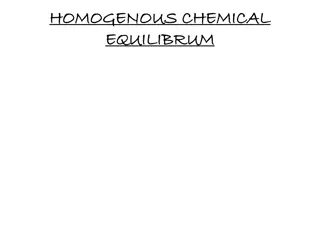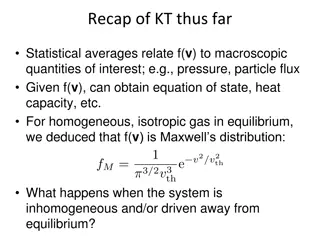Equilibrium Analysis in Cournot Competition Model
The analysis focuses on a Cournot competition model between two identical countries with one producer each. The model includes linear cost functions, demand functions, revenue calculations, profit maximization conditions, and equilibrium determination in both domestic and foreign markets. By solving the profit maximization conditions, equilibrium quantities can be derived for both markets.
Download Presentation

Please find below an Image/Link to download the presentation.
The content on the website is provided AS IS for your information and personal use only. It may not be sold, licensed, or shared on other websites without obtaining consent from the author.If you encounter any issues during the download, it is possible that the publisher has removed the file from their server.
You are allowed to download the files provided on this website for personal or commercial use, subject to the condition that they are used lawfully. All files are the property of their respective owners.
The content on the website is provided AS IS for your information and personal use only. It may not be sold, licensed, or shared on other websites without obtaining consent from the author.
E N D
Presentation Transcript
Dr. Neha Paliwal Assistant Professor Department of Economics UCSSH, MLSU
Assumptions: There are two countries, which are identical in all respects. The commodity is homogeneous There is one producer in each of the two countries. Each producer has equal costs of production. Total cost function is linear in the two countries. The domestic demand function is identical in the two countries. Both the firms display Cournot behaviour i.e., each firm assumes that the supply of the rival firm will remain constant
Model Linear Cost Function C=a+bQ Demand Function in country i given as: Pi=c-d(Q1i+Q2i) i=1 for Domestic Country, i=2 for Foreign Country Revenue to the domestic producer by selling in home country: R11=[ c-d(Q11+Q21) ]* Q11 Revenue to the domestic producer by selling in foreigncountry: R12=[ c-d(Q12+Q22) ]* Q12 here Q= Q11+ Q12
Model cont...... Total Revenue of domestic producer R1=R11+ R12 =[ c-d(Q11+Q21) ]* Q11+[ c-d(Q12+Q22) ]* Q12 Total production cost C1=a+b(Q11+ Q12) Profit Function M1= (R11+ R12)- C1 Or M1=[ c-d(Q11+Q21) ]* Q11+[ c-d(Q12+Q22) ]* Q12- [a+b(Q11+ Q12)]
Model cont...... Profit Maximisation First Order Condition For Domestic Producer M1/ Q11=c-2d Q11-d Q21-b=0 ........(i) M1/ Q12=c-2d Q12-d Q22-b=0............(ii) Profit Maximisation First Order Condition For Foreign Producer M2/ Q21=c-2d Q21-d Q11-b=0.......(iii) M2/ Q22=c-2d Q22-d Q12-b=0..........(iv) Equilibrium for domestic market can be achieved by solving equations (i) and (iii) Equilibrium for domestic market can be achieved by solving equations (ii) and (iv)
